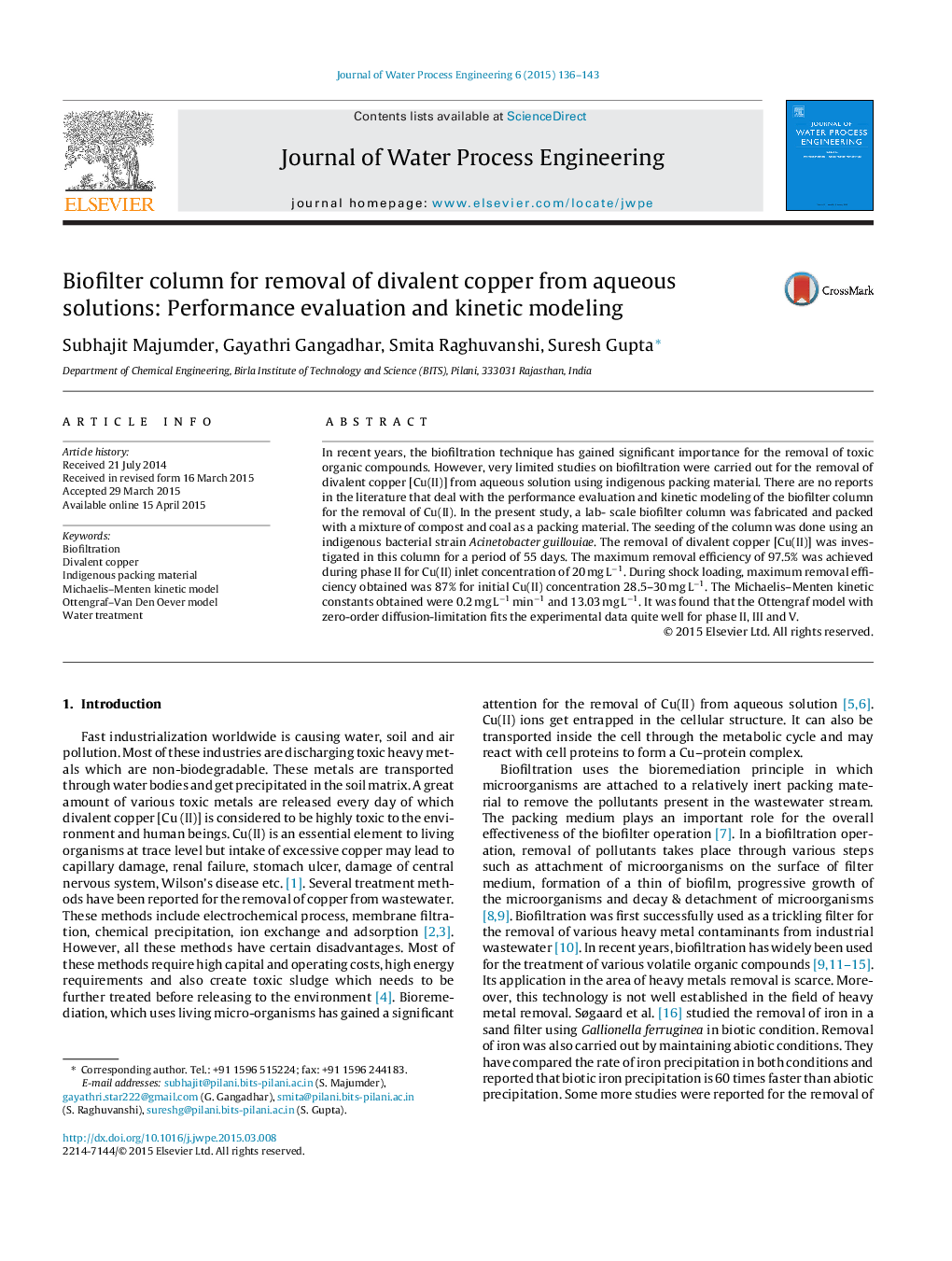| Article ID | Journal | Published Year | Pages | File Type |
|---|---|---|---|---|
| 232662 | Journal of Water Process Engineering | 2015 | 8 Pages |
In recent years, the biofiltration technique has gained significant importance for the removal of toxic organic compounds. However, very limited studies on biofiltration were carried out for the removal of divalent copper [Cu(II)] from aqueous solution using indigenous packing material. There are no reports in the literature that deal with the performance evaluation and kinetic modeling of the biofilter column for the removal of Cu(II). In the present study, a lab- scale biofilter column was fabricated and packed with a mixture of compost and coal as a packing material. The seeding of the column was done using an indigenous bacterial strain Acinetobacter guillouiae. The removal of divalent copper [Cu(II)] was investigated in this column for a period of 55 days. The maximum removal efficiency of 97.5% was achieved during phase II for Cu(II) inlet concentration of 20 mg L−1. During shock loading, maximum removal efficiency obtained was 87% for initial Cu(II) concentration 28.5–30 mg L−1. The Michaelis–Menten kinetic constants obtained were 0.2 mg L−1 min−1 and 13.03 mg L−1. It was found that the Ottengraf model with zero-order diffusion-limitation fits the experimental data quite well for phase II, III and V.
